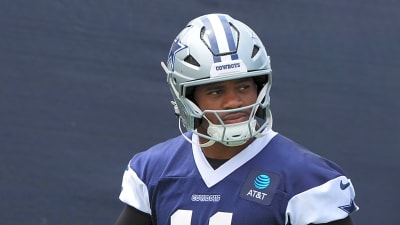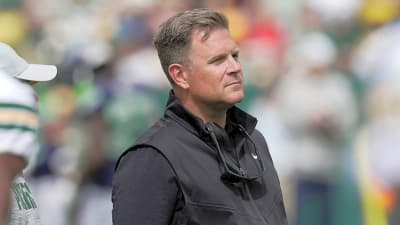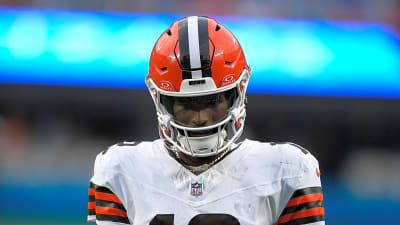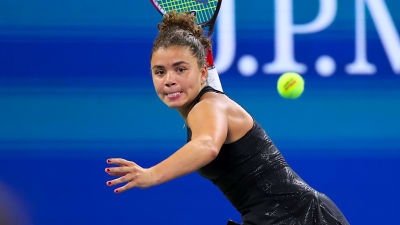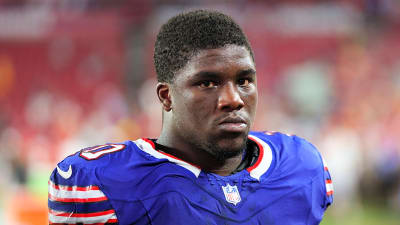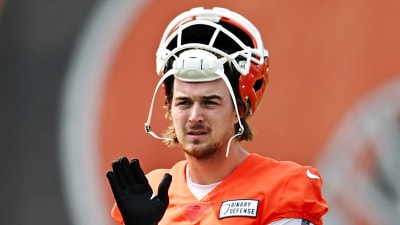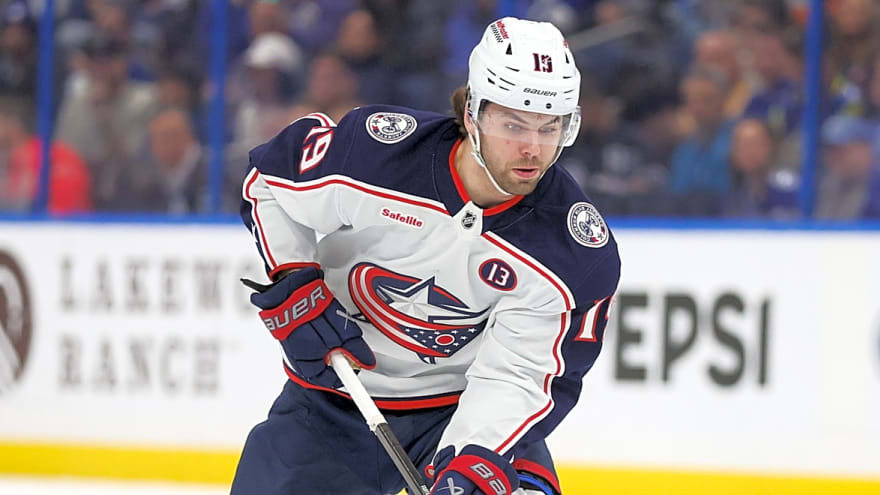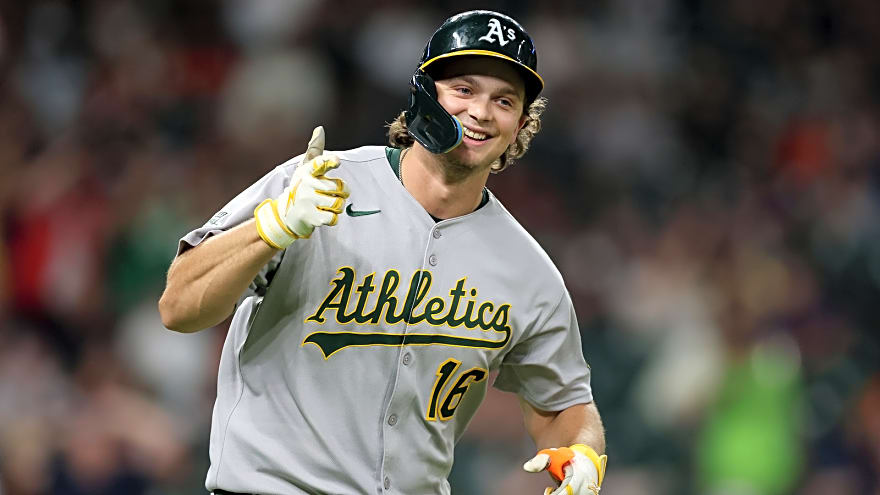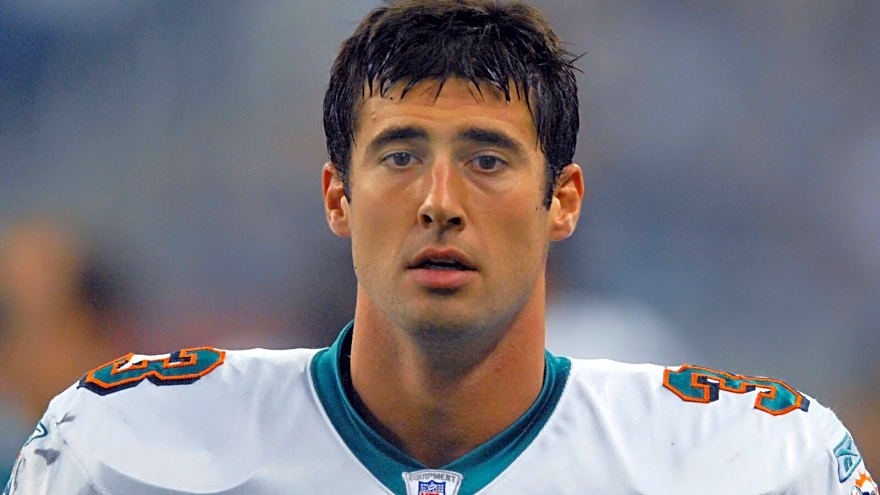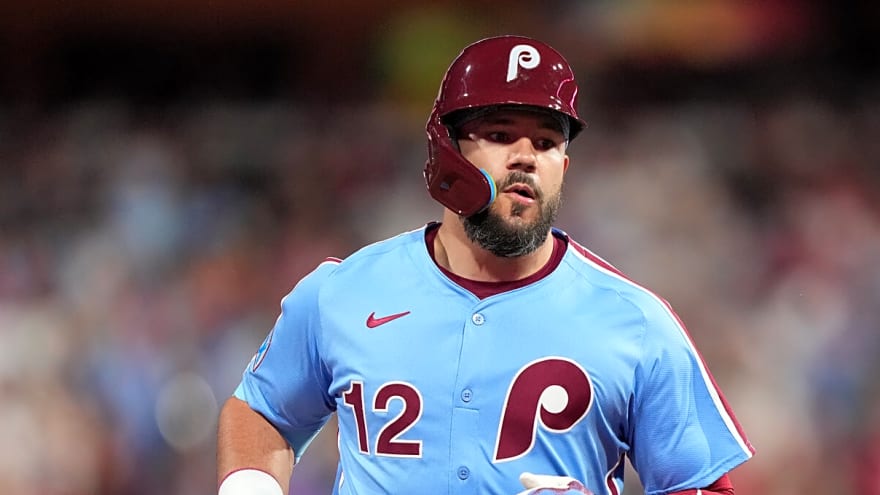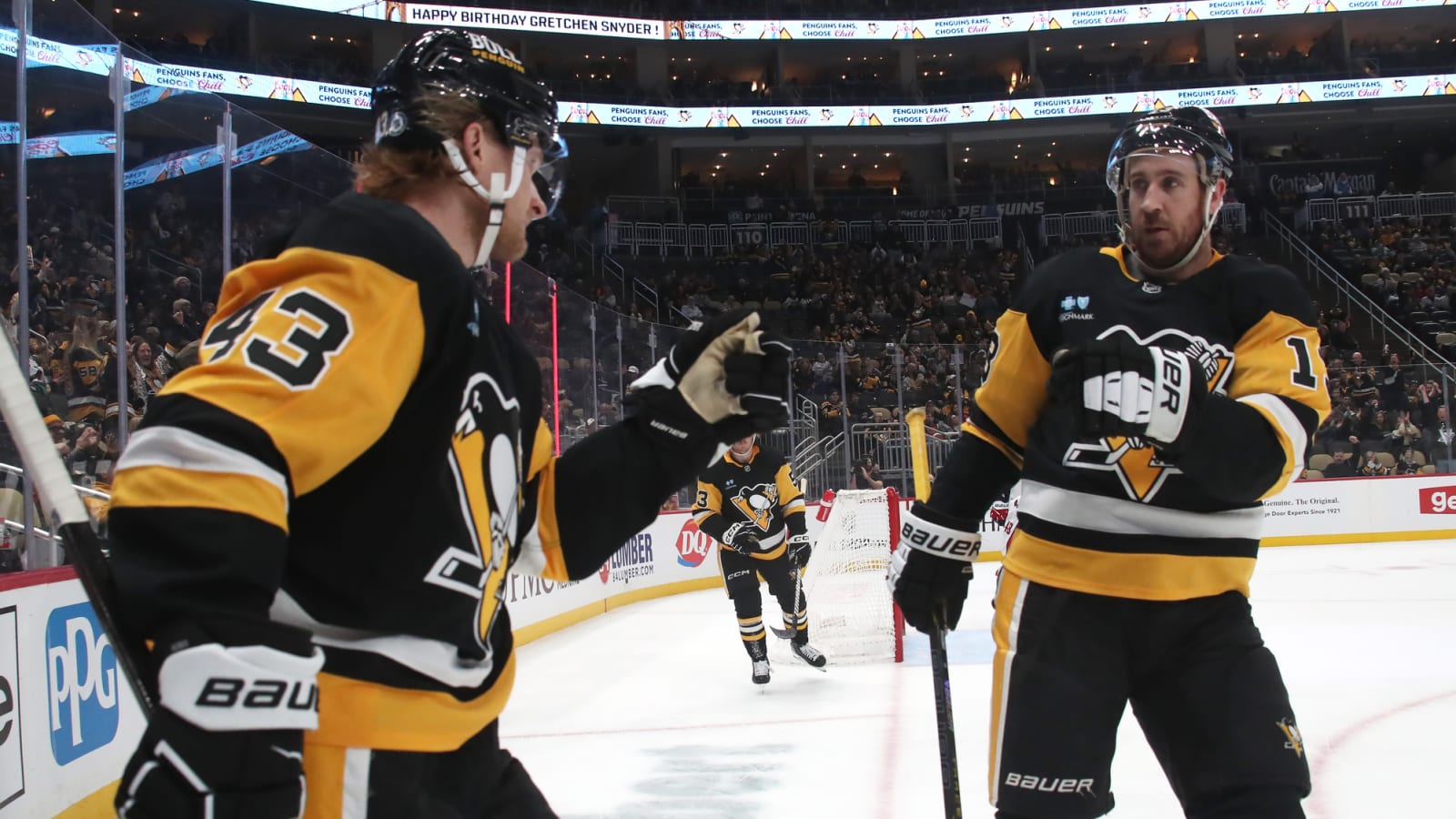
It was a hockey night in Pittsburgh. For better and worse, the Pittsburgh Penguins picked up exactly where they left off before the two-week break in the NHL schedule. They aggressively had the better of play against the Washington Capitals for most of the first two periods, allowing just 13 shots in the first 35 minutes of the game.
However, five of those shots went in. Washington goalie Logan Thompson stood on his head in the first two periods while Penguins netminder Alex Nedeljkovic faceplanted.
A dominating effort quickly became a lopsided 8-3 loss at PPG Paints Arena. The air deflating from the Penguins as goals four, five, and six lit the lamp in less than four minutes was almost audible, probably sounding like a whoopie cushion.
“We beat ourselves in so many ways. I thought when they got their fourth goal–it’s a 3-2 game–it was 5:43 in the second period. Shots were 19-9. We had twice as much offensive zone time as we did in the defensive zone,” Sullivan said. “We felt pretty good about where the game was at even though we were down a goal. And then we chased offense.
“When you chase offense and you don’t have a recognition of risk reward. You end up giving your opponents easy offense. And as a result, that’s what we get. We beat ourselves in so many different ways. That’s the most disappointing part.”
As much potential and talent as the Penguins have, they also have a few Achilles heels. Defense and goaltending were again under the heat lamp Saturday.
The game was also a touching tribute to former and forever Penguins broadcaster Mike Lange, who passed Wednesday at the age of 76. The arena was lit up with cellphone lights in tribute as the organization called past and present broadcast partners and Lange’s family to the ice.
The Penguins’ effort didn’t disappoint until it fell apart.
Shame on the Penguins for six weeks.
Penguins Analysis
The Capitals’ early game plan seemed to be simple. Hang on. Hold on. Rely on goaltender Logan Thompson.
It worked.
“(Thompson) made some big saves, some timely saves, but I really thought we were taking it to them, and we kind of had pressure on them,” said Penguins center Kevin Hayes. “And then the third one, the fourth one went in, and then we were chasing them from there.”
The Capitals are the first-place team in the Metro, but the Penguins controlled territory, won the net-front battles, and made escaping the defensive zone a chore.
Except…
Mistakes. And a few more mistakes. Dominant became dominated. What should have been a triumphant celebration of Lange and the Penguins’ resurgence was instead a funeral pyre.
“Up until about six minutes left in the second there, we did a really good job. We didn’t give up a ton and had a lot of zone time,” Crosby said. “And then I think we just beat ourselves. We made some mistakes–we were creating opportunities for them. You know, it changed the momentum of the game.”
The last 25 minutes were merely a sad procession toward the end. By the time Capitals grinder Brandon Duhaime scored a short breakaway goal, he didn’t even raise his arms.
The Penguins made a few mistakes. Just a few defensive miscues were in their net, and a couple of long shots also tickled twine. Several elevated efforts were wasted, but that’s what happens to struggling teams like the Penguins.
Penguins Xs and Os
Let’s analyze the first 35 minutes when the game was competitive.
**The Penguins actually found a weakness in the Capitals’ defensive structure and exploited it. Better teams will copy what Penguins coach Mike Sullivan devised.
Better teams will be able to make it count, too.
The Penguins launched the center from blue line to blue line, up the middle of the ice on the breakout. The Penguins’ defensemen hit the pivots in stride at the offensive blue line, while the Capitals’ defenders were spaced apart and caught surprised.
The Penguins carved up the structure.
Hayes had a short breakaway and a couple of rushes. Sidney Crosby scored a goal zipping through the same seam of the Capitals’ structure.
Also, (in the first 35) the Penguins transition game was quite good. They used strong defensive zone pressure to bolt the offensive zone with numbers. It didn’t hurt that Erik Karlsson brought his Team Sweden game and was flying on the wing with the forwards, creating matchup imbalances. The Penguins had a little bit of a rush game, but they also held onto pucks, creating low zone pressure.
You saw the good and bad of Karlsson Saturday.
That was the good. Now…the bad.
Penguins Mistakes
But the top two right-side defensemen from whom much is expected made a pair of mistakes. Just one each. And both wound up in the back of the Penguins net.
Mistake #1: Erik Karlsson’s bad turnover at the offensive blue and failure to race back to nullify Andrew Mangiapane’s rush were only exacerbated by a terrible line change in which the Penguins had six players on the ice. With the Keystone Cops routine in effect, the Penguins didn’t cover anyone, and Ethen Frank used his skate to deflect a puck into the net.
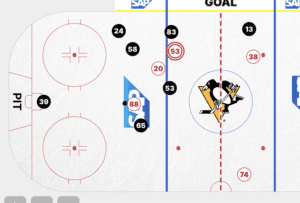
Frank’s redirection was a kick, but as long as a player keeps the skateblade on the ice, it seems to be allowed. After a review, it stood. It could have gone either way, and that was part of the bad luck.
Mistake 2: The Penguins continued to swarm the offensive zone. Kris Letang charged forward as the Capitals gained control of the puck. He should have pizza’d, but he french fry’d at the offensive blue line, and the Capitals easily converted the resulting odd-man rush. A three-on-one shrank to a two-on-one as Martin Fehervary snapped it past Nedeljkovic.
Sloppy Play: Goal 4. Karlsson didn’t have much for Tom Wilson, who took the net front to screen Nedeljkovic. Also, soft goaltending.
Whoops: Goal 5. Defenseman Ryan Graves covered Alex Ovechkin on the wall–the Penguins were not going to let Ovechkin score Saturday. Graves tightly covered the soon-to-be all-time goals leader closely after a center-ice faceoff. However, Noel Accairi drifted to the puck. Perhaps he was supposed to switch with defenseman Vincent Desharnais? The result was Protas getting behind Acciari for a clean rip on Nedeljkovic. A stoppable goal, but a breakaway nonetheless. Follow the arrows:
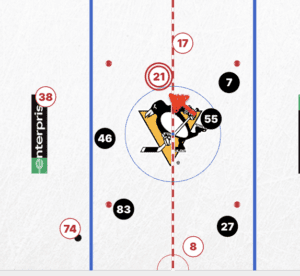
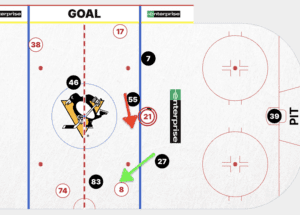
Soft Play: Goal 6. Tom Wilson tip in front. Neither Karlsson nor Matt Grzelcyk ventured near the net to confront Wilson as yesterday’s Amazon packages were delivered with the pizza.
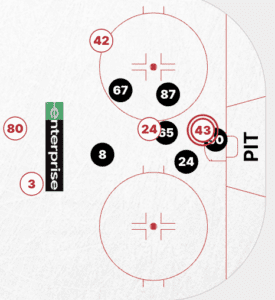
A great effort flushed.
Penguins Report Card
Team: ?!
The Penguins played with heart and intensity, but within a few minutes, it was over—quite anticlimactic, too. Energy and effort are one thing, but execution is another. The Penguins had all three—and then none.
Here are the best performances:
Evgeni Malkin: A
Malkin was wheeling and dealing. Skating around the offensive zone. You may have noticed his backcheck on the second shift of the game, which took away an offensive chance. He dug in.
Michael Bunting: A
Bunting was agitating and playing with purpose in the offensive zone. He had several Grade-A chances, including a couple of rebounds, forcing Thompson to make a few very good saves.
Kevin Hayes: B+
We’re going to dock him a couple of points for not finishing. We spoke to him after the game, and he was caught between the encouragement of getting great looks and the nuisance of getting stuffed.
More must-reads:
- Blue Jackets' extension talks with young star will have major impact on salary
- Dolphins OLBs coach Ryan Crow arrested on domestic battery charge
- The 'Most 1,000-rushing yard NFL seasons' quiz
Breaking News
Trending News
Customize Your Newsletter
 +
+
Get the latest news and rumors, customized to your favorite sports and teams. Emailed daily. Always free!
TODAY'S BEST

The Dallas Stars just locked up a defenseman built for playoff wars, and he's only getting started
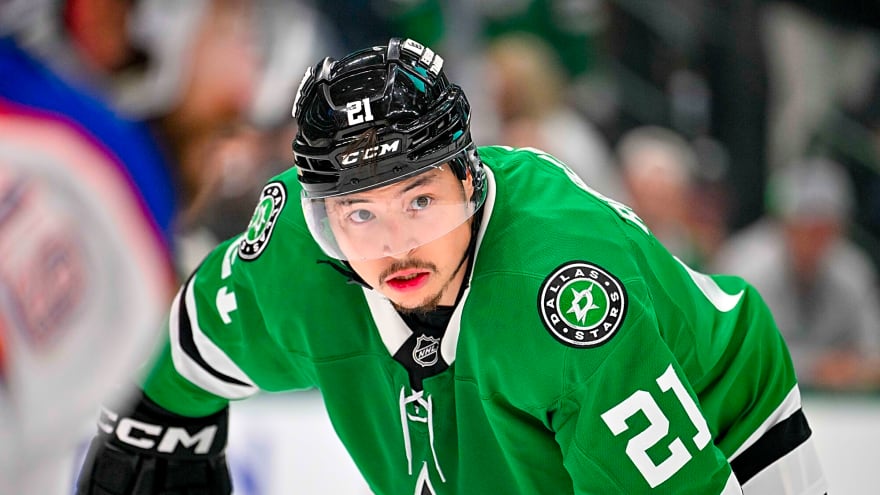
Fans are furious over this proposed Jason Robertson trade to the Toronto Maple Leafs
Some NHL trade rumours make you think, and others feel like pure fantasy. A recent proposal linking the Dallas Stars and Toronto Maple Leafs falls firmly into the second category, sparking debate over the future of Jason Robertson. The Dallas Stars are fresh off another deep playoff run and remain loaded with talent heading into 2025-26. Their top line of Jason Robertson, Roope Hintz, and Mikko Rantanen is arguably the best in hockey, a group carefully built through patience, planning, and smart cap management. So when a recent article from Heavy.com floated the idea of Dallas trading Robertson to the Toronto Maple Leafs in a one-for-one swap for veteran defenseman Morgan Rielly, eyebrows shot up across the hockey world. No prospects. No picks. Just Robertson for Rielly. The Dallas Stars trading Jason Robertson for Morgan Rielly would be a massive mistake Robertson isn't just another forward. He's a franchise cornerstone, a 40-goal scorer, and a player with multiple 80-point seasons already on his résumé. His full stats are available at NHL.com. He's also only 26 and entering his prime years. Rielly, meanwhile, is 31, carries a no-move clause, and while steady, does not address a pressing need in Dallas. With Miro Heiskanen, Thomas Harley, and Lian Bichsel leading the way, the Stars already have a strong defensive core with youth and upside. Even Sportsnet's Nick Kypreos recently cautioned about the complexity of Robertson's next deal, but nothing about that analysis justifies moving him for an aging defenseman. "The Stars need to be careful with how they handle Robertson," Kypreos noted. Careful, however, does not mean giving him away. I think Dallas would be foolish to even entertain this type of move. Robertson isn't just a player, he's part of the identity of the Stars and a key piece of their Stanley Cup hopes. This isn't NHL 26, this is real life, and stars like Robertson simply don't come around often.

Micah Parsons had incredible reaction to Packers trade
The Green Bay Packers’ blockbuster trade to acquire Micah Parsons from the Dallas Cowboys altered the landscape of the NFL, and raised the expectations in Titletown for 2025 and beyond. Parsons immediately bolsters the Packers’ pass rush and, opposite Rashan Gary, has the potential to be a true difference-maker on a roster built to make a deep playoff run. Micah Parsons fired up after Packers trade While those inside the league both resoundingly praised general manager Brian Gutekunst and the Packers while lampooning Cowboys owner Jerry Jones, Parsons’ reaction of pure joy may have been best of all. Parsons has plenty of reason to celebrate between the change of scenery and the fact that he’ll collect $188 million with $120 million fully guaranteed on his new contract with the Packers. The All-Pro will also get the chance to exact some revenge on Jones and his former team when the Packers take on the Cowboys on Sunday Night Football in Week 4.
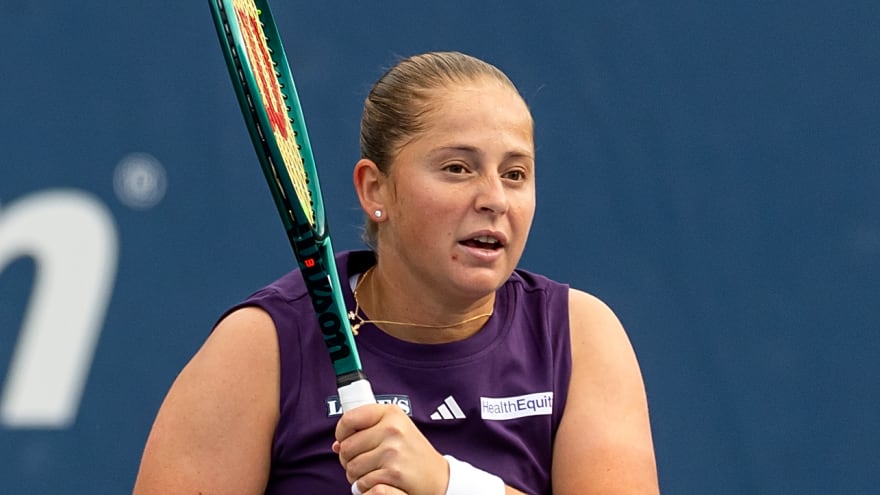
Jelena Ostapenko responds to racism allegations after post-match confrontation with Taylor Townsend
A heated post-match exchange between former World No. 5 Jelena Ostapenko and Taylor Townsend marred an otherwise action-filled fourth day of the U.S. Open on Wednesday. After Townsend defeated the 2017 French Open champion in straight sets, 7-5, 6-1, Ostapenko accused her opponent of unsportsmanlike conduct, pointing out that the American didn't apologize when a net cord helped her win a crucial point earlier in the match. The Latvian wrote on social media that Townsend "was very disrespectful" and didn't show the proper etiquette expected of a pro tennis player. "If she plays in her homeland, it doesn’t mean that she can behave and do whatever she wants," she wrote in a scathing address of Townsend. Townsend offered more details on their post-match confrontation, which led to some suggesting she was racially targeted. "She told me I have no class and no education, and to see what happens if we play each other outside the U.S.," Townsend revealed. Townsend refused to call Ostapenko a racist. "I didn't take it in that way," she said, via BBC. "But also that has been a stigma in our community of being not educated, and all of the things, when it's the furthest thing from the truth. Whether it had racial undertones or not, that's something she can speak on." Ostapenko was widely lambasted on social media, with even World No. 1 Aryna Sabalenka asking her to control her emotions. The under-attack Latvian responded to allegations of her being a racist, while reaffirming her stance on Townsend disrespecting her during the match. "I was never racist in my life and I respect all nations of people in the world, for me it doesn't matter where you come from," she wrote on social media. Townsend will next face Russian teenage prodigy Mirra Andreeva in the third round. The World No. 46 American is trying to reach the fourth round of her home major for the first time since 2019.
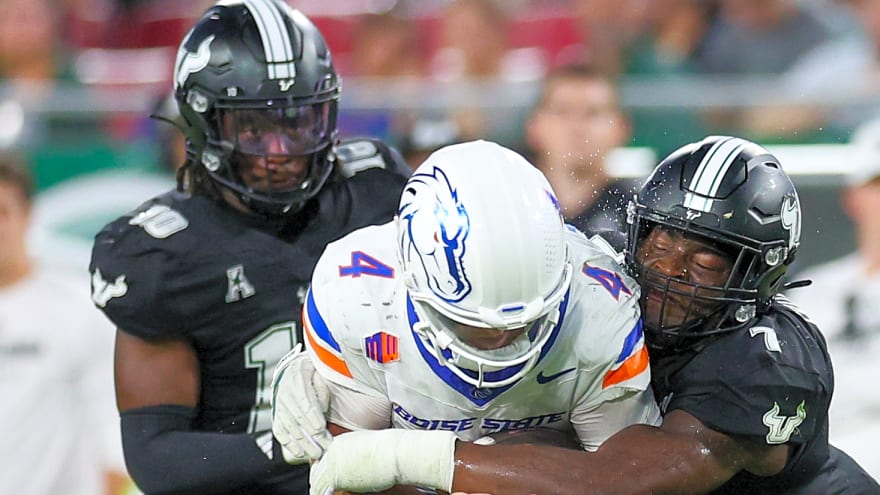
Post-Ashton Jeanty era gets off to brutal start for No. 25 Boise State
There had to be at least some expectation that the Boise State Broncos were going to take a small step backwards in 2025. They probably just did not expect it to happen so soon in the season, and so emphatically. The No. 25 ranked Broncos were absolutely humiliated on Thursday night, losing 34-7 to an unranked South Florida team that was just 7-6 a year ago. It was a rude awakening for what might be ahead for Boise State following the departure of Heisman Trophy runner-up Ashton Jeanty. Jeanty's historic season helped carry the Broncos to an 12-1 regular season, with the only regular season loss being a three-point defeat to Oregon early in the season. They ended up in the College Football Playoff where they lost their first game to Penn State. But with Jeanty on to the NFL (a first-round pick by the Las Vegas Raiders) there was always going to be a huge hole for them to replace. Not only in terms of production and skill, but also in their identity. They had none of that power-running identity on Thursday. Not only did they allow 34 consecutive points to South Florida, but the Broncos also managed to rush for only 122 yards on 38 carries, coming out to just 3.2 yards per attempt. They averaged 6.1 yards per carry in 2024, tied for the second-highest mark in college football. On one hand, losing an early season game isn't the end of the world, especially in the era of expanded playoffs. Boise State could still run the table the rest of the way with a very manageable schedule and play its way back into playoff contention. It's also not uncommon for teams to struggle early in the season. There is no preseason in college football and everybody is just coming in cold right into real games. Sometimes teams take a while to get moving. But this is not a particularly good South Florida team, and for Boise State to come out so flat and be so uncompetitive in the opener is a bad sign for what might be ahead.

